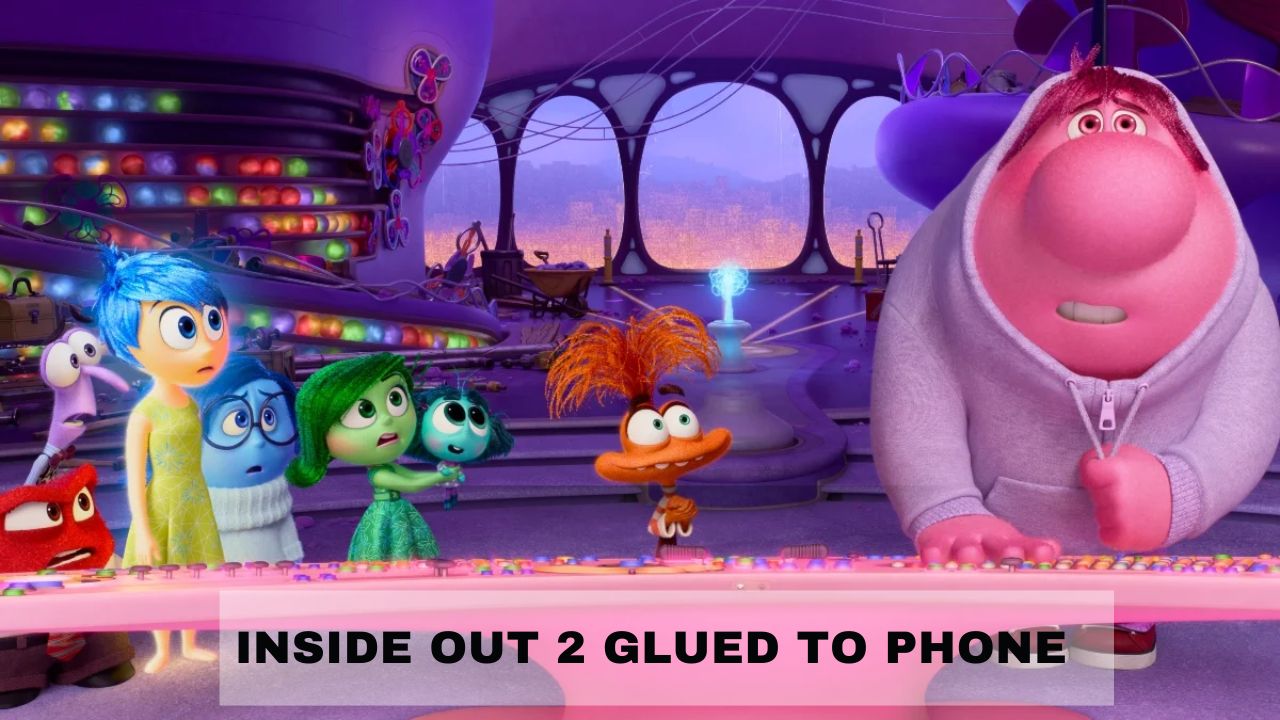A short scene from Inside Out 2 where the feeling Ennui is literally stuck to her phone has gone viral. If you have no idea what that is, don’t worry—I’ve got this. Inside Out 2 picks up with teenage Riley, and introduces four new emotions—Anxiety, Envy, Embarrassment, and Ennui—to her control panel in the mind. These new characters arrive to represent how teens are feeling in the world these days. The “stuck-to-phone” scene is more than just a gag—a commentary on reality, specifically young people and their use of tech. Today, we’re breaking it down step by step so you can see why this scene is significant—and what it reveals about life these days.You can also read more about these new emotions in Pixar’s official reveal: Pixar introduces new characters in Inside Out 2
| Topic | Statistic |
|---|---|
| Teen Screen Time (average per day) | ~7 h 22 min per day — about 43% of waking time |
| ~8 h 56 min per day total screen time | |
| Average Daily Time Spent on Screen Globally | ~6 h 40 min per day for individuals aged between 16 to 64 years. |
| High Screen Time & Mental Health | ≥ 4 h/day related to elevated risk for anxiety (aOR 1.45), depression (aOR 1.65), behavior problems, ADHD |
| Teen Use in the US (2021–2023) | Use screens for ≥4 h/day: 50.4%; among these, in past 2 weeks, anxiety symptoms were experienced by 27.1% and depressive symptoms by 25.9% |
| Habits of Gen Z Phone Users | 39% feel obligated to check the phone in ~2 min when begun to converse; 77% rely on the phone as emotional coping strategy |
| Pre-teen Screen Time | Kids between the ages of 10–11 years spend 4–5 h/day on social media, texting, video watching—and is to blame for manic symptoms |
The Scene in Context
So there’s this new emotion in Inside Out 2. Her name is Ennui. She’s not like Joy, who shines bright, or Anxiety, who’s always on edge. Ennui is… bored. Detached. Almost like she’s too tired to even care.
And what does she do? She’s always on her phone. Just scrolling. Not really here, not really there. You know that feeling when you zone out with your screen and the world kind of fades? That’s exactly her.
The other emotions react. Envy jumps in, Embarrassment hides, Joy tries to take control. Ennui? She just slouches back. Face half-asleep. Phone in hand. Like the whole console of Riley’s mind dims when she takes over. It’s simple but you get it right away. You think, “Oh yeah, I’ve seen that before. Maybe I’ve even been that.”
Symbolism of Being “Glued to Phone”
It’s not really about the phone, is it? It’s about escape. About slipping away when reality feels a bit too much. Ennui scrolling is like a shield. A small wall that keeps the noise out.
But here’s the thing. When you’re glued to a phone, you’re there, but you’re not really there. You’re sitting with people. Or in class. Or maybe at dinner. Yet your mind has drifted somewhere else. That’s what Ennui shows us.
And honestly—it’s not just teenagers. Adults too. Parents at the table. Workers on a break. We all get lost in that screen. Ennui is that moment we all know, the one where life is happening, but we’re not watching. And if you’ve ever wondered about the real link between tech and emotions, the American Psychological Association has even studied how digital media shapes mental health.
Why the Scene Resonates with Audiences
People laugh at it. Of course. A bored emotion on her phone—it’s funny. But then the laugh kind of lingers. Because deep down, it feels a little too close.
That’s Pixar’s magic. They mix honesty with humor. They don’t preach, don’t say “phones are bad.” They just show it. A simple shot. Ennui scrolling, the console dim, the others fading. And it works. It sticks.
Audiences see themselves. Or their kids. Or their friends. And for a moment, we realize—yeah, that’s us. Even reviewers have noticed this balance of humor and heart, like in Variety’s review of Inside Out 2.
Broader Commentary on Technology and Emotions
Phones as a Coping Tool
We all do it. Stressed at school? Waiting in line? Feeling awkward at a family dinner? The phone comes out. Just one swipe, and suddenly the moment feels easier. That’s the trick. Phones become a way to cope. A little safety net we carry in our pockets.
Connection vs. Disconnection
But here’s the trade-off. Phones connect us to the world—friends, news, even strangers. Yet at the same time, they disconnect us from the room we’re sitting in. You’re “with” people online, but the people right next to you fade into the background. Pixar’s choice to show Ennui glued to her screen is a playful but sharp reminder of this split.
The Impact on Growth
There’s also the deeper part—what does this do to us over time? Too much screen time can pull kids (and adults) away from learning how to sit with their own feelings. Boredom, sadness, even joy—these moments help us grow. If we always escape into the screen, we might skip some of that growth. Researchers have even raised questions about how digital use affects self-awareness and development. The National Institutes of Health has reported that high screen time can change the way children’s brains develop.
Lessons and Takeaways
Talk, Don’t Lecture
The movie gives parents and families a way in. Instead of saying “phones are bad,” it opens space to talk about how we use them. A conversation feels easier when you’ve just watched Ennui scrolling her life away on screen.
Spotting the Pattern
For kids and teens, the lesson can be simple: notice when boredom = phone time. It’s not about guilt. It’s about paying attention. Why am I picking this up right now? Is it comfort, or just habit? That little awareness is powerful.
Balance, Not Ban
Most important—it’s not about banning phones. They’re part of life. They’re not going anywhere. What the movie nudges us to do is find balance. Use them, enjoy them, but don’t let Ennui take over the console completely. Even the American Academy of Pediatrics recommends balance instead of strict bans, encouraging families to set healthy limits together.
Conclusion:Inside Out 2 Glued To Phone
So in summary, that one moment of Ennui clinging to her phone isn’t just comedy. It’s as if we hold up a mirror. We see how easily we can reach for screens when life is awkward, stressful, or just boring. But when we opt out, something is lost—a laugh, a chat, or even an emotion we might’ve had to live through. Pixar doesn’t finger-wag; they just show. That’s why it works. The end is simple yet powerful. Families can start to talk, kids and teens can take notice of own habits, adults too—we all know something about ourselves. The message isn’t “phones are bad.” That’s too obvious. Too preachy. Keep them, use them, enjoy them, but don’t let them run the console of your life.








